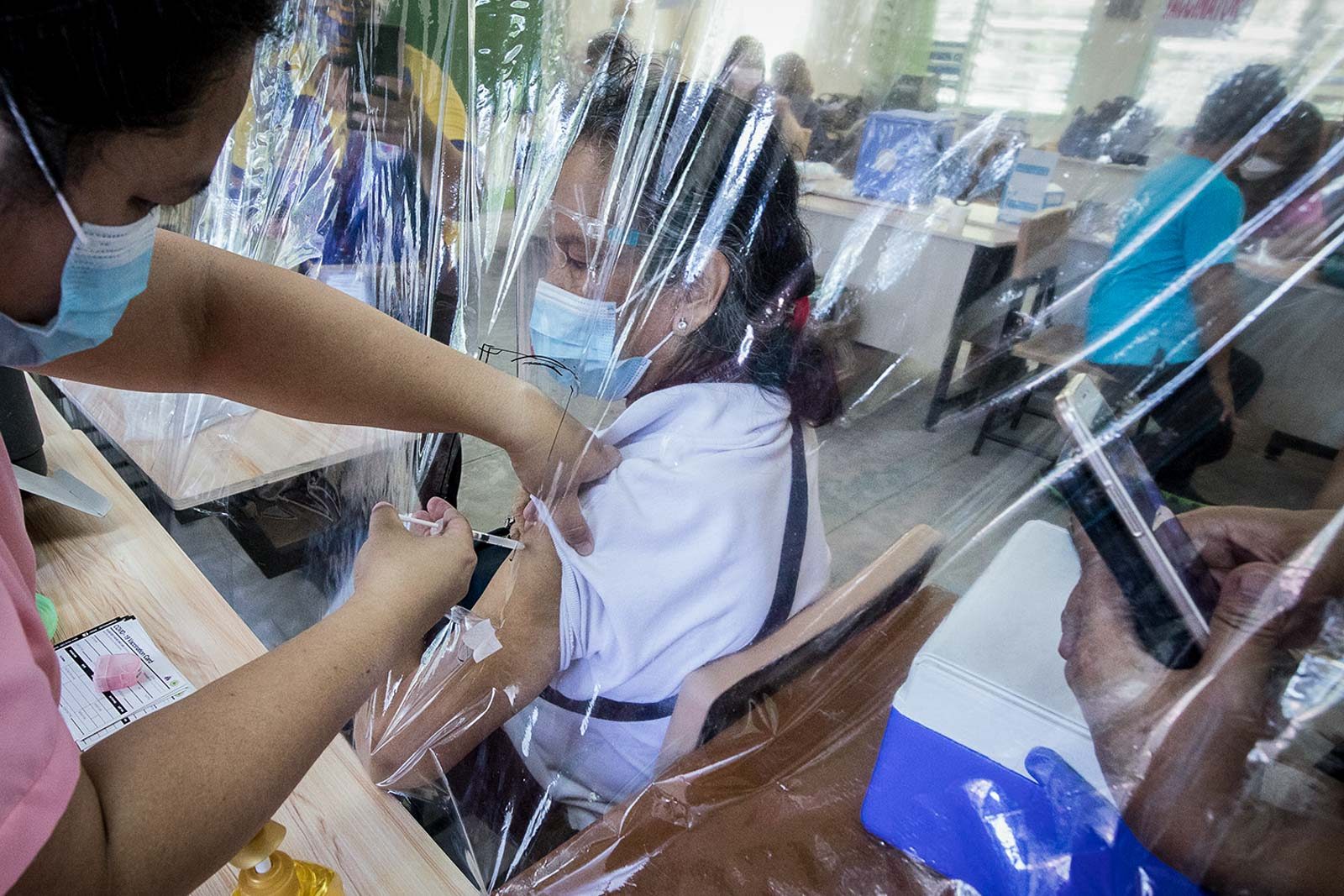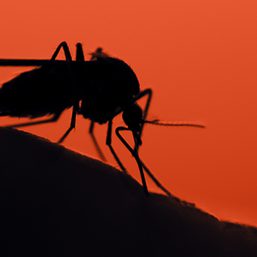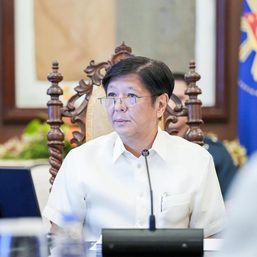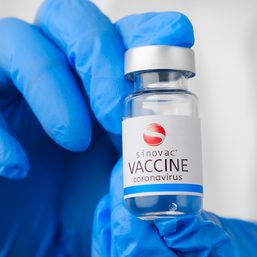SUMMARY
This is AI generated summarization, which may have errors. For context, always refer to the full article.

The Duterte administration is funding its coronavirus vaccination program largely through loans from multilateral lenders.
The national government budgeted some P82.5 billion for COVID-19 vaccines in 2021, of which P70 billion will come from loans and additional revenues, classified as unprogrammed funds.
To date, the Philippines is poised to secure at least $1.2 billion or around P58.5 billion for vaccines. Here’s the breakdown:
- $500 million from the World Bank under the Philippines COVID-19 Emergency Response Project-Additional Financing
- $400 million from the Asian Development Bank (ADB) under the Second Health System Enhancement to Address and Limit COVID-19 (HEAL 2), sourced from the Asia Pacific Vaccine Facility (APVAX)
- $300 million from the Asian Infrastructure Investment Bank (AIIB) under the HEAL 2 program (to be secured; co-financed with the ADB)
ADB loans
Under the ADB’s loan terms, only vaccines that meet at least 1 of the 3 APVAX criteria can be procured:
- Selected for procurement through COVAX
- Pre-qualified by the World Health Organization
- Manufacture is authorized by a stringent regulatory authority in the country of production
Sakiko Tanaka, ADB principal social sector specialist for Southeast Asia, noted the loan agreement specifies that the ADB will pay vaccine suppliers directly. Money will not be coursed through the Philippine government.
The loan is to be paid in 10 years, with a grace period of 3 years. The $400 million is already the maximum amount the Philippines can get under this financing facility.
The ADB and AIIB loans would together fund the procurement of up to 110 million doses of COVID-19 vaccines for as many as 50 million Filipinos.
The ADB’s support for the Philippines’ pandemic response is already around $3 billion in loans and grants.
World Bank loans
The World Bank said that besides the vaccine purchase, the additional financing it will provide would also support public health measures, such as the use of web platforms to gather citizen feedback on the vaccination program, as well as feedback surveys to boost citizen engagement.
The World Bank is one of the largest sources of funding for developing countries. It has a $12-billion fund to help low- and middle-income countries purchase and distribute COVID-19 vaccines, tests, and treatments, and strengthen vaccination systems.
The new financing adds to the World Bank’s ongoing Philippines COVID-19 Emergency Response Project approved in April 2020, which funded the purchase of laboratory equipment and test kits, personal protective equipment, and ambulances, as well as medical equipment and supplies such as mechanical ventilators, portable x-ray machines, and infusion pumps. (READ: [OPINION] How the IMF and World Bank turned a pandemic into a public relations stunt)
Pandemic response loans
Here are the other loans and grants related to COVID-19 response that the Philippine government secured from the multilateral lenders:
ADB
- $3-million grant in March 2020 to procure emergency medical supplies and establish a COVID-19 testing laboratory in San Fernando, Pampanga
- $5-million grant in March 2020 for emergency food supplies for more than 162,000 vulnerable households in Metro Manila and nearby provinces in April to May 2020
- $1.5-billion loan in April 2020, which contributed to the government’s wage subsidy and social protection programs
- $200-million loan in April 2020 to help the government finance emergency cash transfers to poor households
- $2-million grant to assist distance education during the pandemic by providing teachers’ training and learning tools and supporting the learning of secondary school students from disadvantaged households
World Bank
- $100 million for personal protective equipment, medicine, and devices such as mechanical ventilators, cardiac monitors, and COVID-19 test kits
- $600 million for the Pantawid Pamilyang Pilipino Program or 4Ps and cushion the pandemic’s impact on poor households
- $500 million to boost the Philippines’ pandemic response under the Third Risk Management Development Policy Loan, which aims to support programs that improve disaster response and rehabilitation
National debt
As of end-January 2021, the government’s national debt stood at P10.33 trillion, reflecting a 5.4% increase from the end-December 2020 level. (READ: [ANALYSIS] Duterte’s new COVID-19 loans: Need we worry?)
Of the total debt stock, 29% were sourced externally, while 71% are domestic borrowings.
Domestic debt amounted to P7.3 trillion, 9.4% higher month-on-month due to the bridge loan availed from the Bangko Sentral ng Pilipinas.
Meanwhile, external debt stood at P3 trillion, 3.2% lower than in December, mainly due to repayments of foreign loans and the currency depreciation against the dollar. – Rappler.com
Add a comment
How does this make you feel?
![[In This Economy] Why Marcos is getting high on unprogrammed funds](https://www.rappler.com/tachyon/2024/07/TL-marcos-program-funds-july-19-2024.jpg?resize=257%2C257&crop=265px%2C0px%2C720px%2C720px)
![[In This Economy] Is the Marcos government unlawfully dipping into PhilHealth funds?](https://www.rappler.com/tachyon/2024/07/marcos-government-philhealth-funds-july-12-2024.jpg?resize=257%2C257&crop=425px%2C0px%2C1080px%2C1080px)



![[Rappler’s Best] US does propaganda? Of course.](https://www.rappler.com/tachyon/2024/06/US-does-propaganda-Of-course-june-17-2024.jpg?resize=257%2C257&crop=236px%2C0px%2C720px%2C720px)



There are no comments yet. Add your comment to start the conversation.